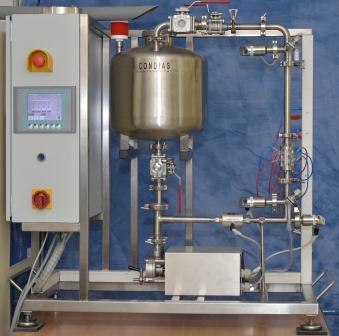WP 3 Sewage treatment plants
Five antihypertensive pharmaceuticals from the sartan group (candesartan, eprosartan, irbesartan, olmesartan, and valsartan) have been tested in laboratory sewage treatment plants (LSTP). Although structural related, the single representatives of the sartans are variously biodegradable: mean eliminations rates range from 17 % (omesartan) to 96 % (valsartan). By using the Pathway-Prediction-System from the University of Minnesota (UM-PPS) numerous transformation products could be predicted theoretically. To find out if these were traceable in reality WP2 tested the LSTP-effluent on occurring transformation products. The laboratories of LW and TUM could verify the already known transformation products valsartan acid, alkylated valsartan, and amino valsartan in LSTP-effluent, real STP-effluents, and river waters. Additional unknown transformation products of the sartans were identified. Further transformation products from pharmaceuticals like bisoprolol and venlafaxin were found, but not from levetiracetam and hydrochlorothiazid (HTC). WP4 tested the LSTP-effluent for ecotoxicology.
The laboratory construction with electrodes made with diamonds was finished and delivered to the LfU. This fourth treatment stage operates with hydroxyl radicals. First tests have been performed with the coloring-agent uranin because its degradation can be traced analytical by UV/VIS spectroscopy and fluorescent spectroscopy. Thereby the conditions – like current density and flow velocity – have been optimized. For detecting possibly occurring toxic degradation and by-products ecotoxicological tests are made. In waste water treated with hydroxyl radicals by-products like chlorate and adsorbable organic halogen compounds (AOX) can occur easily.

Fig. 1: CONDIAS-electrode







